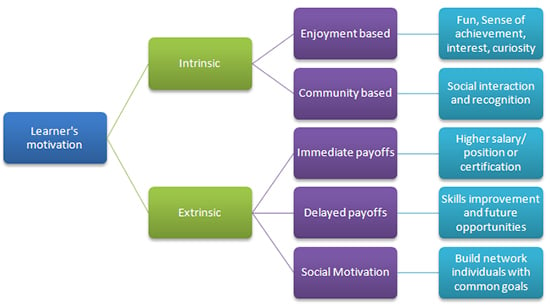Motivational Factors to Consider in E-learning & LMS Design

What are the motivational factors that drive an employee to take time off to learn? An understanding of these factors might help in designing eLearning and a Learning Management System that attract more participants.
During the course of my research I came across a very interesting paper titled, “More than Fun and Money. Worker Motivation in Crowdsourcing – A Study on Mechanical Turk” by Kaufmann et al. In this paper, Kaufmann and his team conducted a survey of 431 workers on Mechanical Turk to find out the motivational factors that drove them to spend time on the platform. Their research, of course was in the context of “crowdsourcing” but I wondered if the motivational factors mentioned in their model could be applied to eLearning and to the Learning Management System as well.
Kaufmann and his team discovered that the monetary returns that workers get from Human Intelligence Tasks or HITs (as they are called in crowdsourcing) are not very high and yet there is a large number of people who choose to take them up. Obviously, the reasons could be as diverse as the profile of workers registered on Mechanical Turk and Kaufmann and his team decided to explore them through a survey.
After a comprehensive literature review, they devised a preliminary model based on established theories which I would like to borrow to see whether it can be applied to both Learning Management System and eLearning design and development.

Source: Kaufmann et al. (2011), Worker Motivation in Crowdsourcing
According to their model, motivation can be either intrinsic or extrinsic. Intrinsic motivation is further classified as enjoyment based and community based. Extrinsic motivation could be in the form of immediate payoffs, delayed payoffs or social motivation.
I thought that this research could be useful in the context of corporate training particularly while designing eLearning courses and establishing a Learning Management System. What if we could incorporate these motivational factors into eLearning design, development and hosting?
Here are some suggestions how one can cater to the motivational factors of employees when developing eLearning courses and setting up a Learning Management System.
Create a design that is fun, interactive and has freedom of choice (Enjoyment based):
Design courses with some fun and interactive element. Including quizzes, activities and games as a part of the course can add the fun element. Scenario based or story-based courses can be used where appropriate. A degree of freedom given to employees in course navigation instead of forcing them to view all the pages also contributes to more number of employees taking the courses.
Cater to the need for social interaction and collaboration (Community based):
Host the courses in a collaborative learning environment where learners can interact with others in the organization who may be located in different geographical regions. Opportunities of remote mentorship and guidance, and peer interaction could prove to be good motivational factors.
Provide quantifiable incentives (Immediate pay-offs):
Provide incentives in the form of higher salaries, position or certification to employees who complete the courses This can be very motivating and employees are more likely to complete courses assigned to them.
Satisfy long term needs (Delayed pay offs):
Make sure that the knowledge gained is beneficial to employees in the long run particularly in their career growth. It also helps in “Signaling” which refers to using actions as strategic signals to the surroundings . An employee uses the learning environment by actively participating in discussions and knowledge forums which could be noticed by senior managers who may otherwise not have direct interaction with the employee. It provides a forum to be noticed and seen which by itself is a good motivating factor.
Satisfy social needs (Social motivation):
Establish a Learning Management System that becomes a hub of activity, where there is constant interaction and learning among employees across the organization, irrespective of their geographical location. Blogs, Wikis, and Discussion forums could be a part of this dynamic network of individuals with common goals. Employees could also interact with their colleagues who have completed the courses to check out how the courses can be beneficial to them.
Investment in eLearning and a Learning Management System is huge and it pays to study the motivational factors of employees and factor these before designing eLearning courses and establishing a learning portal or LMS.





![6 Factors that Impact your Choice of Blended Learning Model [Infographic]](https://blog.commlabindia.com/hubfs/Imported_Blog_Media/blended-learning-model-influencing-factors.jpg)